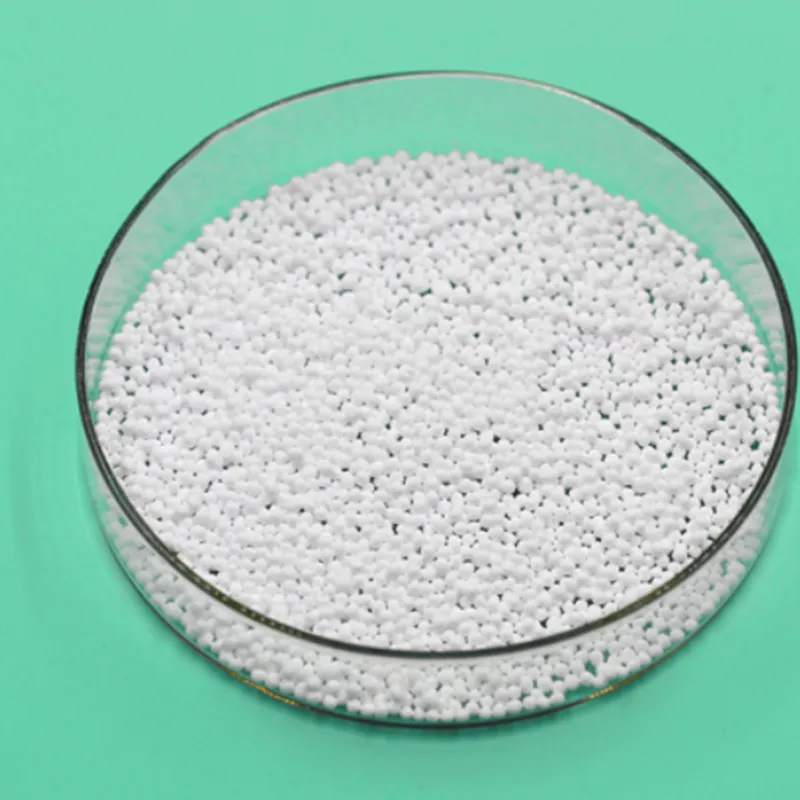
metabisulfite de sodium
Understanding Sodium Metabisulfite Properties, Uses, and Safety
Sodium metabisulfite, often represented by the chemical formula Na2S2O5, is a white crystalline powder that has gained prominence in various industries due to its versatile properties. It is commonly used as a preservative, antioxidant, and bleaching agent. This article delves into its characteristics, applications, and safety considerations.
Chemical Properties
Sodium metabisulfite is a member of the sulfite family, which includes various sulfur compounds. It is soluble in water, forming sodium bisulfite in solution. It has a characteristic sulfurous odor, reminiscent of burnt matches, and can release sulfur dioxide (SO2) gas when exposed to acid. This property makes it a useful compound in many chemical reactions and applications.
Applications
1. Food Industry Sodium metabisulfite is widely used as a food preservative. It helps to prevent spoilage and discoloration in various products, including dried fruits, wines, and some canned foods. It serves as an antioxidant, inhibiting the enzymatic browning process that can affect the quality and appearance of food. Additionally, it is used to maintain the freshness of some vegetables and wines, prolonging their shelf life.
Understanding Sodium Metabisulfite Properties, Uses, and Safety
3. Pharmaceuticals Sodium metabisulfite acts as an antioxidant in pharmaceutical formulations, particularly in injectable drugs. It prevents oxidative degradation of active pharmaceutical ingredients, thus ensuring their efficacy and safety. Additionally, it is used in some vaccines and as a stabilizer in other biopharmaceutical products.
metabisulfite de sodium

4. Cosmetics In the cosmetic industry, sodium metabisulfite is utilized for its preservative and antioxidant properties. It helps to extend the shelf life of creams, lotions, and other personal care products, preventing the growth of bacteria and mold. However, its use in cosmetics is regulated, and formulations must adhere to specific safety limits.
5. Textile and Paper Industries Sodium metabisulfite is used in the textile industry for bleaching and reducing dyes. It can also help to remove excess color from fabrics and papers, contributing to a more uniform appearance. In the paper industry, it is used in the pulping process to control the bleaching of wood fibers.
6. Water Treatment In water treatment facilities, sodium metabisulfite is employed to dechlorinate water. It reacts with chlorine to form sodium chloride and sulfuric acid, effectively neutralizing harmful chlorine residues. This is particularly important in preparing water for consumption or specific industrial processes.
Safety and Handling
While sodium metabisulfite is generally recognized as safe when used in appropriate amounts, it can pose health risks, particularly for individuals with sulfite sensitivities or asthma. Exposure may lead to allergic reactions, respiratory issues, and other health problems. Therefore, it’s essential for manufacturers to comply with safety regulations and limit its concentration in food and cosmetic products.
When handling sodium metabisulfite, individuals should wear appropriate personal protective equipment (PPE), including gloves and masks, to avoid inhalation or skin contact. It should be stored in a cool, dry place, away from incompatible substances such as strong acids, which can release harmful sulfur dioxide gas.
Conclusion
Sodium metabisulfite is a multifaceted compound with significant applications across various industries, particularly in food preservation, winemaking, pharmaceuticals, and water treatment. While its benefits are notable, understanding its safety and handling requirements is essential to minimize health risks. As industries continue to evolve, sodium metabisulfite will likely remain a critical component in maintaining the quality and safety of products we consume and use daily.
-
Understanding Synthetic Rubber OptionsNewsApr.27,2025
-
Trichloroisocyanuric Acid: Essential for Clean and Safe WaterNewsApr.27,2025
-
Sodium Dichloroisocyanurate: Key to Safe Water TreatmentNewsApr.27,2025
-
Sodium Acid Pyrophosphate: Essential in Modern Food ProcessingNewsApr.27,2025
-
Essential Water Treatment ChemicalsNewsApr.27,2025
-
Denatured Alcohol and Its Industrial UsesNewsApr.27,2025
-
The Versatile Uses of Sodium BicarbonateNewsApr.24,2025
Hebei Tenger Chemical Technology Co., Ltd. focuses on the chemical industry and is committed to the export service of chemical raw materials.
-

view more DiethanolisopropanolamineIn the ever-growing field of chemical solutions, diethanolisopropanolamine (DEIPA) stands out as a versatile and important compound. Due to its unique chemical structure and properties, DEIPA is of interest to various industries including construction, personal care, and agriculture. -

view more TriisopropanolamineTriisopropanolamine (TIPA) alkanol amine substance, is a kind of alcohol amine compound with amino and alcohol hydroxyl, and because of its molecules contains both amino and hydroxyl. -

view more Tetramethyl Thiuram DisulfideTetramethyl thiuram disulfide, also known as TMTD, is a white to light-yellow powder with a distinct sulfur-like odor. It is soluble in organic solvents such as benzene, acetone, and ethyl acetate, making it highly versatile for use in different formulations. TMTD is known for its excellent vulcanization acceleration properties, which makes it a key ingredient in the production of rubber products. Additionally, it acts as an effective fungicide and bactericide, making it valuable in agricultural applications. Its high purity and stability ensure consistent performance, making it a preferred choice for manufacturers across various industries.











